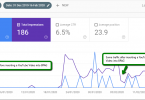When it comes to cross-platform native app development, the world has the most credible answer called React Native. It holds unmatched promise for building powerful cross-platform applications at a rapid pace. Naturally, there is no wonder in the fact that it is now actively being used by all leading app development companies and elsewhere. Some of the world’s most respected apps built with React Native including Facebook, Walmart, Instagram to Uber and Tesla.
Even though React Native is a great framework optimised in every possible way to build performance-driven apps with less coding effort, all apps built with this framework may not deliver equal performance. Generally speaking, higher the number of animation, tabs and interactive elements you use in an app, slower it runs.

How to fix this issue in a conclusive manner? Well, here are some time-tested manners to boost the performance of a React Native app.
1. Navigation Components
One of the core issues that every React Native development team has to solve is the slowdown of navigation between JavaScript and native elements. You need to know about the core issues concerning navigation and have to solve them.
With React Native framework, we have four navigation components as mentioned below. You need to choose among these components to ensure faster navigation between JavaScript and native components. By selecting the appropriate navigation components, you can speed up the app performance.
- Navigator: This component is primarily used for creating prototypes of smaller apps, and it is not ideal for creating truly native-feeling navigation.
- Navigator iOS: This component available only for the iOS can help to optimise the navigation for the iOS app version.
- Navigation Experiment: This component was introduced to address an array of pending issues on the GitHub, and many developers are still using it.
- ReactNavigation: This component offers a glitch-free performance and is used by the vast majority of React Native applications.
2. Enhance the responsiveness of the UI
Many developers who were early adopters of React Native still say that their experience with the framework initially was not good. They experienced several key issues and so, over time they concentrated on the behaviour of the components and lifecycle.
Here below we will guide you making better three different types of iteration and thus enhancing the UI responsiveness.
- Don’t pass inline functions as props: When the regular inline functions are rendered as props, the responsiveness of the UI terribly suffers.
- Use PureComponent & shouldComponentUpdate(): By applying this iteration we can help to sync rendering cycles of a wide number of components. Though all the issues regarding this are not solved with this.
- Refactor the code: Constantly changing prop value can cause serious trouble and can infect almost all the components. To prevent this refactoring some of the components can be helpful. By doing this, you can make these components receive only the code they need to render.
3. Update React Native and all packages and libraries
Just by using the upgrade command of React Native you can tune the framework to the latest available update, but that is not enough. You need to look for and use the latest versions of all other libraries and packages as well. You need to look for the latest package versions in the package.json.
Now let us spare a few sentences concerning this upgrading process.
- Take help of the react-native-git-upgrade and install the same just as the guide for react-native upgrade mentioned.
- Now you need to debug the new upgraded file simply by running react-native run-android which will allow testing the new and upgraded app on Android.
- Next step is to upgrade dependency packages.
- In case the packages had many dependencies, and the process led to any of the classes, you will find problems with the app. Now you need to address such faults.
- Make sure any changed class name is reflected everywhere in the code.
- Now it is time to upgrade the Android SDK versions by changing the Android build.gradle file to accommodate the latest SDK versions.
4. Limit the number of requests to a minimum
As of now, we mostly concentrated on the technical aspects of the upgrading process. Now, it is equally important to tell about how just a few constraints and timely actions can help your React Native app perform better. One of the common reasons for slowing down a React Native app is the unnecessary number of caching requests. It is especially true for app data that does not change too frequently. When your data remains the same, asking backend for updates can only add a burden for the app.
This is why we recommend using a caching system that allows setting cache duration as per your priority. When you are updating data too frequently, you can keep the cache duration much lower for frequent upgrades and in other times can keep it optimum.
5. Utilise simple and effective selectors, wherever possible
Let’s understand the important role selectors play. When you conduct an API call your Backend sends data that you can further utilise by putting them in the Redux store. For accessing any such data you need the selectors. If the selector is responsible for a task, every time the app pages or components are rendered the same selector will be called upon.
Here we mention some of the key ways you can prevent such a situation leading to unnecessary rendering and performance issues.
- Only use data that you can store and use from Redux store.
- Don’t perform complex actions with the help of selectors. Rather take third-party service for many activities and only publish the resulting information.
- Even while using selectors for several tasks use a quality library such as the re-select.
- Lastly, make sure you stick to data that you need to display without fail. If you need to use just 20 points for the purpose, limit your development efforts to that limit.
Conclusion
All the tips mentioned above really focus on the practical challenges of building a high-performance React Native app. The list is far from exhaustive, but it clearly explains some of the critical issues.





Leave a Comment